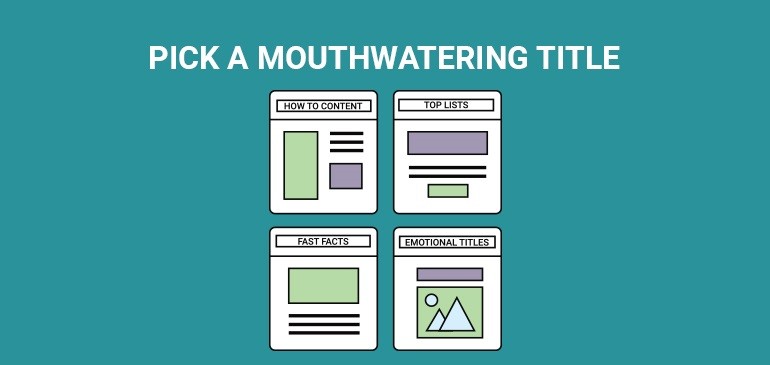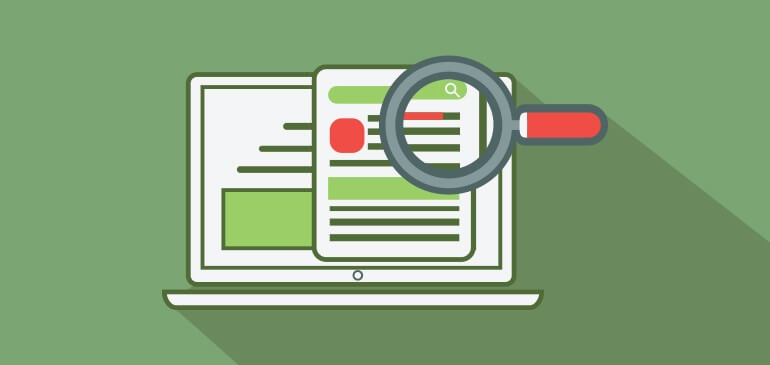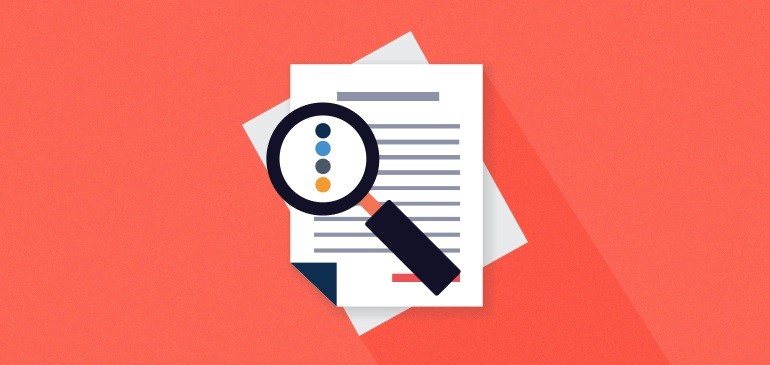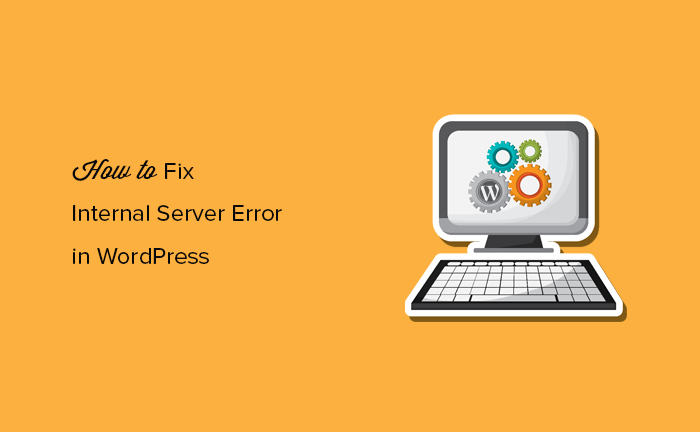This step by step guide will help you to write a stunning blog post. Blogging is not just about stringing a couple of words together, throwing in a bunch of keywords, and calling it a day.
If you want your WordPress blog to catch attention and not be marked as spam by the search engines, you want it to be unique, relevant, and engaging. Especially when writing long-form content, you need to keep things interesting.
Otherwise, you lose your reader’s attention before they reach to the conclusion part of your blog.

If you’re a beginner who wants to learn how to write a great blog post, here are the steps to follow:
1. Pick a Good Title

Starting with a catchy title is a good way to bring the focus of your users on your blog. It’s the center of everything you will include in the blog.
Anytime you feel that the content is not aligned with the title, delete that part or use it somewhere else. Though some people pick an engaging title after they have written the blog post, it’s better to have a working title. You can change it later on. Remember, you’re just starting.
Nothing is set in stone, but it’s good to have a solid starting point. A good practice is to write several headlines and select the most interesting one. Over the time, you will find it easier to come up with a headline that really gets attention.
A catchy title sets the tone and mood of the blog and helps you remember what you should be focusing on. These formats work wonders:
- How-to Content– How to Be that Friend Everyone Wants to Have, How to be Financially Stable Before You Reach 30, How to Dress for Success Every Single Time
- Top lists– Top 5 Destinations to Spend Your Gap Year, Top 10 Wardrobe Essentials Every Girl Should Have, Top 22 Makeup Hacks to Learn Before It’s Too Late
- Fast Facts– 29 Myths About Homeownership, 33 Home Makeover Ideas Under $5, The 3 Secrets That Will Make You Rich
- Emotional Titles– 3 Terrifying Things that Happen if You Don’t Have Life Insurance, 4 Remarkable Ways to Make Your Relationship Last, 11 Compelling Reasons to Lose Weight Now
2. Know Who You’re Writing For

You’re writing for an audience, and your audience will be looking for a relatable content. Some things may appeal to millennials, while others may turn baby boomers away. It’s important to know who you’re writing for so that you can get to their level and explain things in a way that they will understand.
Remember these tips before you write about your chosen topic:
- Have a target audience in mind– Your blog should belong in a niche, and your target audience should be a sub-population of that niche. For instance, if you’re blogging about baby strollers, your target audience can be first-time mothers or single parents who are having a hard time carrying their baby around.
- Stay on point– After you’ve determined your target audience, you need to stay on point. First-time mothers don’t want to read too much about how the elderly have cared for their children in the past, and single parents will not benefit from a subheading telling them how to care for their spouse. Trim the fat and leave your readers with a tasty, juicy meat.
3. Know What to Write, and How to Write It

Before you write anything, make sure that you’ve read other articles about the topic. This helps you weed out topics that have already been covered by other blogs.
Don’t write a blog that’s just a rehash of what everyone else has already written unless you can do it better than them. And that means offering information they haven’t covered before.
Think like a reader. What would you want to read next?
Come up with a topic you would be interested to read. Let’s suppose, someone has written about the appeal of using prints in curtains and wallpapers, discussed the classic look that solid colors bring to a house.
Go against the grain and catch the readers who are looking for the other side of an argument. Then, make your arguments compelling.
Use short, write meaningful sentences. Don’t be a victim of fluff. Improve the readability of your blog, so that both Google and human readers will approve of it and find it worthy.
Be concise and ruthless in your sentences. Go straight to the point. Your readers don’t have all day.
4. Work on a Captivating Intro

You already have an interesting title. Now, work on a captivating intro. The first few paragraphs of your blog will determine whether the reader will stay for the rest of it or not.
Don’t start off with something boring. Add facts and statistics that pique the interest of readers. Tell a joke. Ask them a question. Then, work on explaining it later, under different subheadings.
Your intro is just as good as the rest of the content, and at every point in your article, visitors should not want to stop reading.
Captivate them and hold their interest. This means conducting a thorough research about your topic. The more you know, the more enriching your writing will be.
Pro Tip:
Do not overstep the line between knowing a lot and knowing everything. Nobody wants a smarty-pant, and if you say your blog is the number one authority when it comes to the topic you are discussing, you are making claims that you may not be able to back up. Rather than overpromising and over inflating your blog’s importance, be that friendly blog that gives information without sounding like a nag or a wannabe expert.
5. Write, Edit, and Fine-Tune Content

Your approach to writing may be unique, and there’s nothing wrong with that. Go ahead and write, write, write.
After every few paragraphs, read what you’ve written and see if anything needs further clarification. Use subheadings to make the entire article more readable.
Readers don’t like being presented with one big chunk of text. The visual formatting appeals to them, too.
However, writing is not just about pretty words and formatting. You also need to pay attention to your grammar.
Readers will judge the credibility of your work by how professional it sounds. And a blog replete with grammatical errors would not pass anyone’s standards of professionalism.
If you need the help, install Grammarly on your desktop or run your draft through a spellchecker. Others, hire a proofreader to make sure their blog is ready for publishing, but you should still edit your own work beforehand. You can never go wrong with reading the whole blog, just to see how your ideas flow.
Fine-tune it to make sure the information flows easily. You can’t discuss a topic by going back and forth every other paragraph.
The entire blog should be coherent, with one paragraph flowing into the next. When proofreading, read the content aloud to see if there are any awkward sentences or repetitive words. These make your blog sound unprofessional, but you may not catch them by just reading silently.
Reading the blog aloud helps you catch phrases that do not sound natural. You do not want your article to sound like it’s been spun or written by a robot.
6. Avoid Stuffing the Blog with Keywords

When you’re writing a blog for SEO purposes, it’s a common mistake to think that you should be using your keywords all the time.
This used to be acceptable in the past, but today, Google considers keyword stuffing as a black-hat SEO strategy. Doing this can get your whole site penalized. You don’t want that.
What you want instead is to write content with keywords that are well-integrated into the blog. Here are some suggestions:
- Use Keywords Organically– Keywords should be inserted in such a way that they do not compromise the grammar and flow of ideas. Don’t worry about using exact match for your main keywords. Google is intelligent enough to know what you mean even if you add prepositions in your key phrases. Your priority is to offer value to your readers, and that means writing for people, not robots.
- Use Keywords in Strategic Parts– One way to organize your keywords is to use them in certain parts of the blog. This is a time-tested SEO strategy, but it still reaps benefits to this day. Include the keyword in the beginning of your title and in some sub headings. It should also be in your first and last paragraph, in the meta title, and in the meta description. If you’re using images, make sure the meta details of that image contain the keyword. Screenshots should have the same border size, so they are easier to read and pleasing to the eyes.
7. Use Subheadings and Organize Ideas

Subheadings are visual cues. When your reader skims through your article, they should already have an overview of what it’s all about, thanks to the subheadings. Make them interesting and informative.
Make sure they are in line with your title. If your title, for instance, is “How to Lose Weight in 10 Days,” you can break down the subheadings to each day of those 10 days, and briefly explain what each day is all about.
Use bullet points if you have to list certain items. These are visually appealing, as well. Their formatting also gives Google an idea of where relevant information can be taken.
Google now has Answer boxes known as rich snippets, which display a list or table containing answers to your queries on top of the search results. A majority of searchers click on the link that Google features in this rich snippet box. If you want to be featured, structure your content accordingly.
Pro Tip: Use the Schema WordPress Theme to increase your chances of getting your website featured in the Google Rich Snippets.
8. Use Images Wisely

Do you remember reading those picture books when you were a kid? Images add to the story and make it more interesting.
Though you don’t necessarily have to use cartoon illustrations in your blog, a few images at certain intervals can refresh the mind before you give them more text to read.
Always work under the assumption that the brain wants to go back to sleep after a few minutes of reading. To stimulate their attention back to reading your blog, give them visuals.
Choose images that convey meaning or GIFs that are fun and entertaining. These inject some humor into your blog and make it easier to read. Images can make a punchline more effective, especially if you are using relevant memes.
Be aware of the size of the images you use though the resolution is important. You don’t want to be serving pixelated images to your readers. However, using images that are too large may severely impact the loading time of your blog.
Site visitors don’t want to wait. Use medium-sized images, so that rendering your site for any screen type, whether on mobile or on a desktop, will not be hard.
Related Read: 36 Best Places to Find Free Stock Photos Online
9. Link to Reputable Sources

Your blog won’t be adding much value if it isn’t linking to other pertinent information. External links act as supplementary information for your blog, guiding readers to resources that will back up your blog and talk about other details that you couldn’t include in your own content.
When adding these links, you have to think about your audience and what else they would be interested in. At the same time, choose sources relevant to your niche, so that Google knows you’re not spamming your readers.
For instance, if you’re talking about plumbing hacks, it would be suspicious to have links that point to a pizza shop.
To improve the authority and relevance of your blog, you can keep the following things in mind:
- Use anchor texts effectively– Anchor texts shouldn’t span entire paragraphs. They can be a single word or a meaningful phrase that is relevant to the link they are pointing to. Do not mask your links by using anchor texts that have no relation to them. If your anchor text says “great summer vacation ideas,” it should point to a list of summer vacation ideas, not an affiliate site just to get your reader’s money.
- Optimize On-Page SEO– Your blog posts should be interconnected. It should have a link to other relevant pages in your site, and other pages should link to your blog post. This ensures that there are no orphan pages and that you are distributing the link juice properly. Don’t just link to the homepage in an attempt to build site authority. When in doubt, always remember that it’s better to write for the audience, not the search engine.
- Ensure they are shareable– Readers share stories on social media. When they find interesting blogs, they want to share these, too. Each blog entry should have social media sharing buttons within easy reach, and your pages should be easy to view from different browsers. Some social media users could be on mobile. You cannot expect them to switch to a computer just to view your blog.
10. End Your Blog with a Bang

Your title draws attention, and your introduction keeps readers glued. However, this doesn’t mean that the last paragraph is the least important. You should not end your blog just for the sake of formality. End it with a statement that drives readers into action.
If you were offering travel advice, encourage them to take that trip soon. If you’re suggesting life changes, recap the highlights of your article and tell them to work on the changes before it’s too late. Don’t overpromise, but don’t just end the blog without effecting change.
Your call-to-action can be effective if you:
- Use action words: get, go, do, buy
- Remind them of why their action is necessary
- Place it somewhere easily noticeable
11. Get Opinions

Once you’re done with your blog, it’s time to uncover it. You don’t have to do the reveal all at once by publishing it to the world immediately. You can have one person read it first, and ask for their feedback.
Chances are, you may have missed some things because of your personal bias. As the author of the blog, you can argue that everything in it is relevant and should stay. However, readers may consider some parts as irrelevant, errant, or unnecessary.
Be prepared to revise your blog. It’s a part of writing. It doesn’t mean your blog is not written properly. It just means it can be written better. Ask one or two people you trust to read your blog and work on their comments before deeming it ready for publication.
12. Use Tags

Finishing the blog does not mean you’re done. You want it to do well on search engines, and for it to be searchable, you should use relevant tags.
Tags are markers that help organize blog posts under a relevant category. These help the readers browse for related information after reading one particular entry. Tags are also used when people are searching outside your blog.
Does this mean you should add every tag you can think of to every single post? No. In some themes, tags show up publicly and clutter your post. Even if that’s the case, having so many tags dilutes the power of each one.
If your reader has more than 20 tags to choose from, they will feel overwhelmed. Give each post 5-10 tags, and file them under the appropriate category instead.
If your blog’s structure permits it, display headlines of related content, as well. This improves the time spent by visitors on your website. Rather than leaving as soon as they finish reading a blog, they can look around for content that appeals to them.
13. Blog Constantly

You could have had a rough start and you may have revised your first blog more times than you’d care to admit, but this doesn’t mean you are not cut out for blogging. Casual bloggers all started this way. You learn along the way, and practice does make perfect when it comes to blogging.
No one figures out how to write a blog post in one try. Keeping to a schedule and blogging constantly will develop your voice, tone, and expertise. It also builds up your blog’s authority as more relevant posts are written around it. You can also repurpose or update an old blog, to keep the traffic flowing.
Understand that blogging is not just about writing. It’s also about reading other blogs and resources so that you can enrich your own mind and, in effect, create more meaningful content.
Remember, your goal is to be a unique source of information. Your blog should have its own place in your chosen niche. Your posts should tackle a topic differently. Your ideas should help your readers.
Blogging means stepping out of other bloggers’ shadows and casting your own light. Before you can do that, you have to know where you and everyone else currently stand. If you don’t know what they’re writing, how can you learn from them?
Final Words
There are so many ways to create compelling content, and you’ll find endless online illustrations about them. Some promise to teach you how to write a blog in 10 easy steps; others do the same thing in just 5. Some will give you a “definitive” guide in 300 words; others will need 5000 words to say the same thing. And none of them are wrong. All of them are simply sharing the process that works for them so that you can find a process that works for you.
Blogging is fun. It can supplement a brand’s business website. It can also enhance the portfolio of a budding author. It can showcase your talent as a writer. It can increase your reach and make you an influential person.
To be an effective blogger, don’t forget the fun aspect of writing. If you’re writing boring, repetitive articles just for the sake of publishing something, you’re adding water to a perfectly aged wine and diluting its potency.
You’re not helping yourself; rather, you’re taking down a promising blog and filling it with content that no one wants to read.
There are so many ways to write a blog, but there’s only one way to do it wrong i.e. by not enjoying what you’re doing.
Whatever blog topic you choose to write, if you’re not enjoying writing it, you can’t expect your readers to love it.
So, before you start a blog, make sure you choose a topic close to your heart. It should help you as much as it helps your readers. Only then can you write a blog that really makes a difference.
If you liked this article, then please subscribe to our YouTube Channel for WordPress video tutorials. You can also find us on Twitter and Facebook










1 thought on “Step By Step Guide To Write A Stunning Blog Post”
Hello everybody, here every person is sharing these knowledge,
therefore it’s pleasant to read this website, and I used to
pay a visit this blog every day.